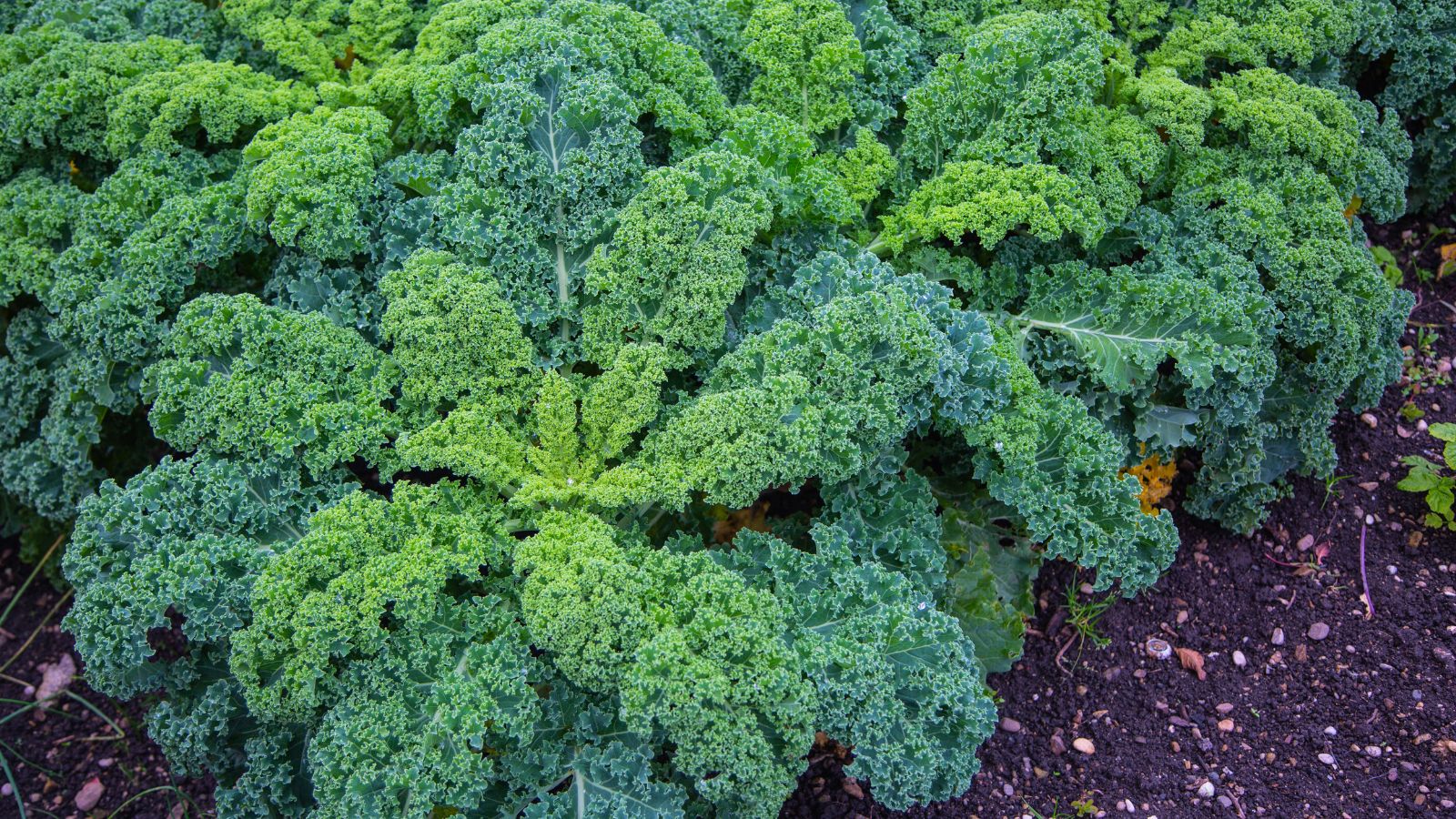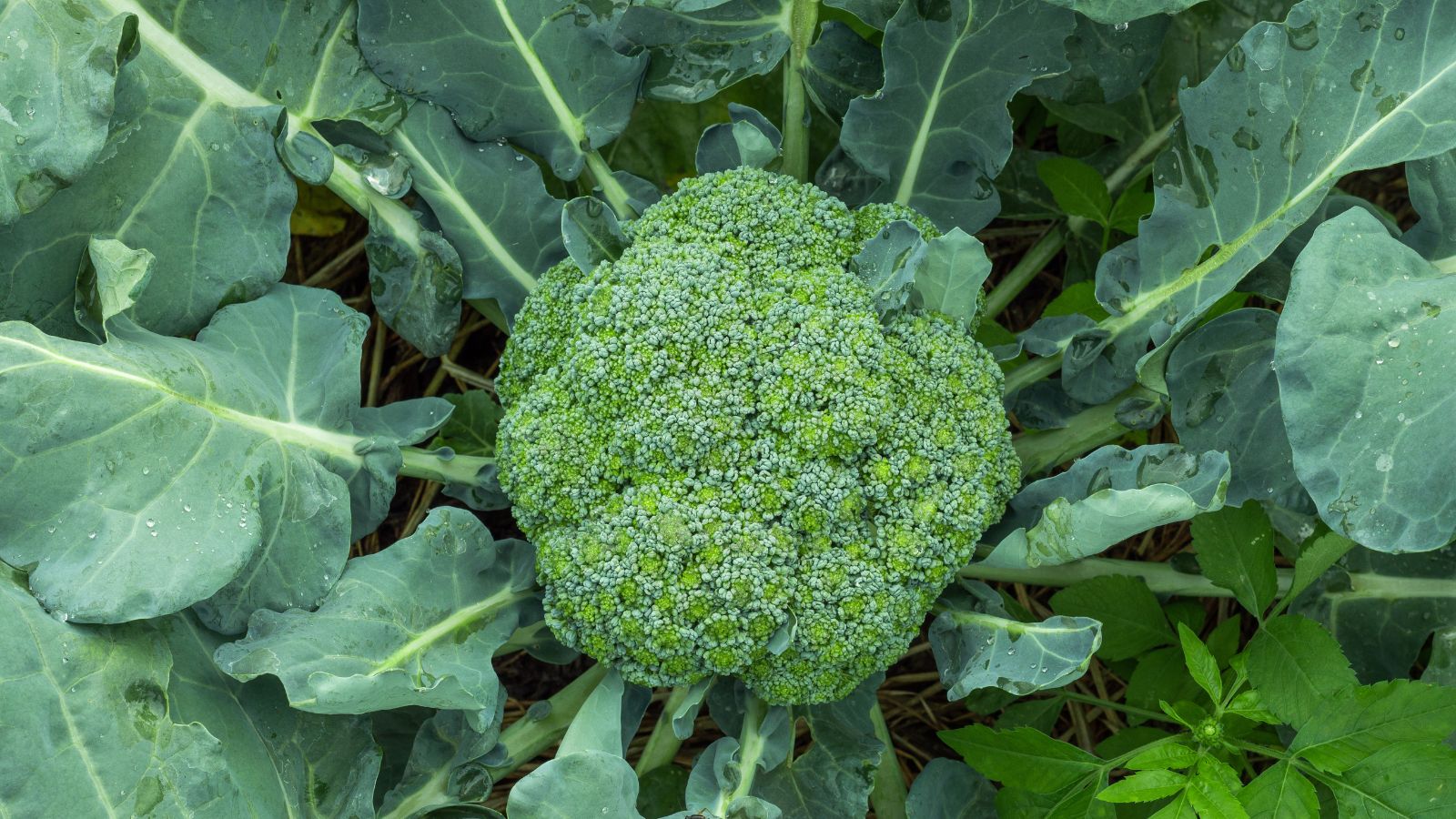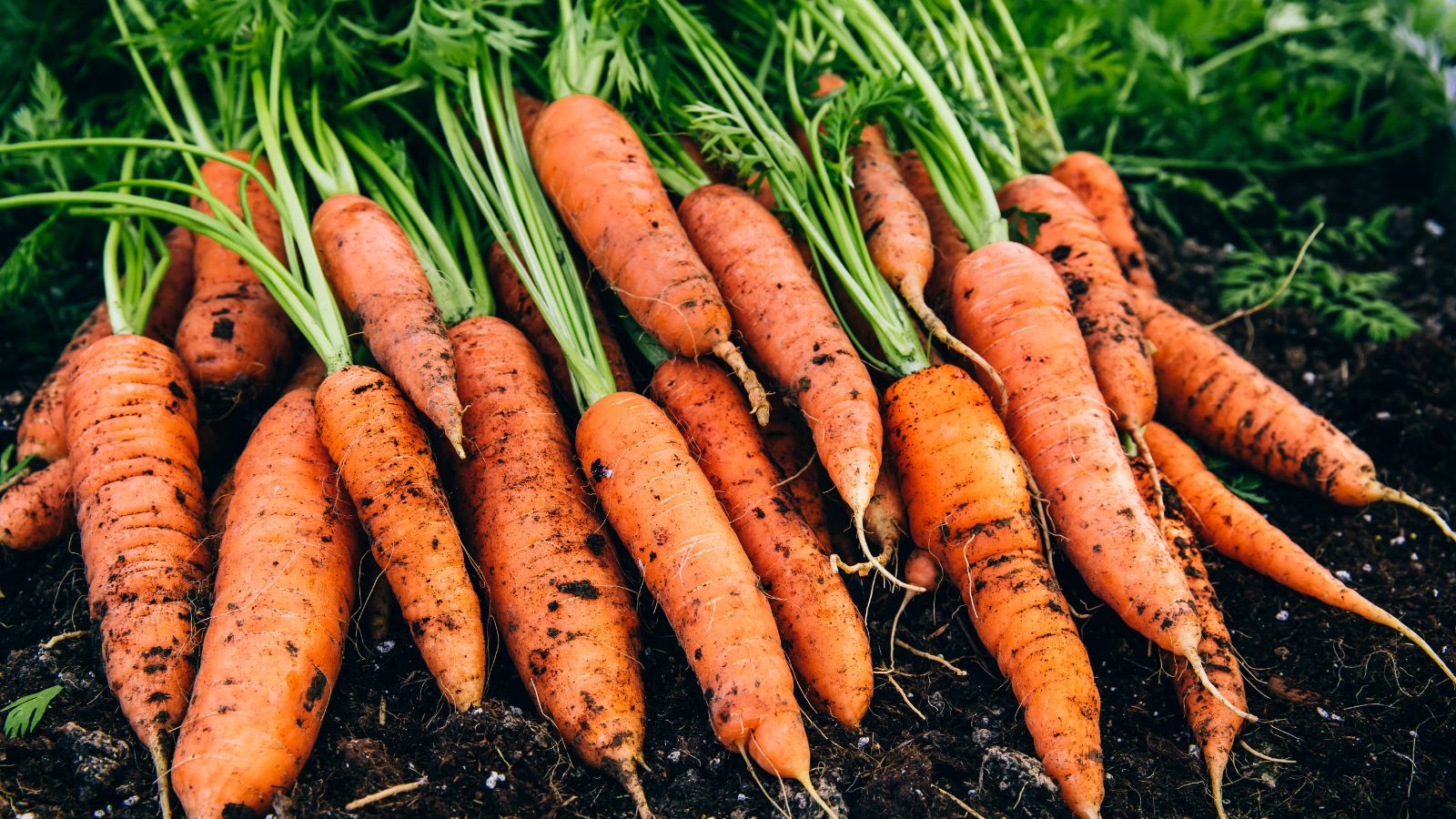15 Vegetables to Plant in November Based on Frost Date
If your first frost date is looming (or has already passed), you may think the time for sowing seeds is over. Think again. In this article, gardening expert Madison Moulton covers 15 vegetables you should plant in November—whether outdoors, under frost covers, or indoors—based on your frost date.

Contents
As the days get shorter and the temperatures chillier, you may think you’re fast running out of growing time. Luckily, I’m here to tell you that’s not the case. There are many vegetables you can still plant in November, depending on your growing zone.
The key is understanding your frost date. In November, frost dates for gardeners in lower USDA hardiness zones have generally already passed. That doesn’t mean you can’t grow anything at all; it just means you need to stick to super cold-hardy crops, growing under frost covers, or planting indoors.
Gardeners in zones 8 and above still have some time before the first frost in either November or December, giving you plenty of growing options. The best choice is to sow short-season crops that will quickly germinate and be ready to harvest right before temperatures dip too low. Using frost covers to extend your season is also a great option. And for those in very warm climates (zone 10 and above), you don’t really have to worry about the cold at all.
As long as you pick short-season crops that don’t mind the cold and limited sunlight exposure, and make some modifications to protect any sensitive plants, there are still plenty of vegetables to plant in November.
Kale

Greens are incredibly useful in fall and winter, not just in the garden, but in the kitchen too. Many varieties have short seasons where individual leaves can be picked within a month after sowing, perfect for adding to winter salads and stews.
Kale is one of the most cold-hardy leafy greens you can grow, particularly tough varieties like ‘Dwarf Blue Curled’ and ‘Red Russian‘. The leaves actually get sweeter after frost, ready to harvest in as little as 21 days. If you live in a cooler zone with an early first frost, use a frost cover to keep the young plants protected until they’ve established strong roots.
Spinach

Spinach is another green that grows better in cooler weather, although not all varieties are as cold-hardy as kale. Stick with tougher spinaches like ‘Lavewa‘ that tolerate frost and sub-zero temperatures without struggle, providing some protection if you’re sowing much later into November and first frost is looming.
Since spinach is ready to harvest in just under a month, gardeners with frost dates in December can direct sow almost any variety outdoors in November. Those in cooler zones below 7 should consider growing under frost covers or even sowing baby greens seeds indoors.
Lettuce

If you live in a warm climate with first frost in December (or no frost at all), November is the ideal time to plant lettuce. These greens are quick to bolt in high temperatures and perform much better in the cool conditions of fall and winter.
If you live in a lower zone with your first frost in November or earlier, you shouldn’t rule out lettuce either. Pick a frost-tolerant cut-and-come-again variety that you can make the most of in a shorter season. ‘Black Seeded Simpson‘ is ideal, or choose ‘Red Sails‘ for a pop of color in your fall garden.
Bok Choy

Asian greens are another great choice for fall sowing, and one of my favorites is bok choy. The combination of crunchy stems and delicate leaves is great in any dish, particularly in stir-fries. Bok choy also matures quickly, allowing you to harvest before any extreme temperatures kick in.
Plant bok choy early in November, particularly if your first frost date is coming up soon. They will emerge in 5-10 days, ready to harvest in just under two months. This vegetable is somewhat frost-tolerant but needs the protection of a frost cover in cooler climates over December.
Bunching Onions

While it is possible for gardeners in warmer climates to plant bulb onions in November, this month is a little late to get seeds into the ground, especially with to the lower sunlight intensity. Bunching onions, on the other hand, are ideal for sowing in November, no matter where you live.
Cultivars like ‘White Lisbon’ are frost tolerant and remarkably easy to grow, ideal for beginners. They also mature quickly and add wonderful oniony flavor to dishes while you’re waiting for your bulbing onion harvest. Those in zones 7 and lower should consider growing under a frost cover or in containers for extra protection.
Leeks

A relative of the bulbing onion, leeks are also an ideal vegetable to plant in November. Leave a large crop in the garden over winter and pull them as you need to add your cozy soups and stews. ‘King Richard‘ is a great cold-hardy option.
November is later than usual to plant leeks, particularly in zones below 9. They do tolerate cold but need to have a strong root system first. Make sure you use frost covers after sowing to keep young plants protected until they mature. Once they have matured, these vegetables can even handle snow cover without trouble.
Garlic

If you’re wondering whether it’s too late to plant garlic, I’m happy to inform you it may not be. If the soil in your garden is still workable, it’s possible to plant garlic in November. In zones 8 and 9, November is actually the best time to plant.
Garlic needs a period of vernalization (cold exposure) to form bulbs, benefitting from temperature dips in fall and winter. Aim to plant around 2 weeks before your first frost date, or with extra protection if that date has already passed.
Fava Beans

Beans generally prefer moderate climates over temperature extremes. But when it comes to fava beans, you should have no problem growing in frosty conditions over November and December. Varieties like ‘Windsor‘ don’t mind temperature dips and will be ready to harvest the following spring.
Since the plant has to last all winter before you can harvest in spring, this vegetable is recommended for milder climates (zones 8 and above). If your first frost is early in November, ensure you give young plants extra protection to allow them to establish well.
Broccoli

Members of the brassica family are popular cool-season crops, and broccoli is no exception. This vegetable is a staple in my fall garden and winter dishes, packed with nutrients and flavor. They are also frost tolerant once established, especially when growing cultivars bred for cold-tolerance like ‘Waltham 29′.
Start your broccoli seeds in trays and transplant them outdoors before your first frost date. Gardeners in colder climates will need to provide protection until the broccoli matures, as the 12-week sowing window before the first frost will have long passed by November. Use a frost cover or grow in containers in a protected area.
Carrots

If you love sweet carrots and have a first frost date in late November or later, this month is a great time to plant. The drops in temperature help sweeten the carrots, ensuring you have a delicious harvest throughout winter and into spring.
Many carrot varieties are frost-tolerant once established, including ‘Red Cored’ or ‘Shin Kuroda‘. They can tolerate quite extreme temperature drops for short periods without permanent damage. If you live in a cooler climate with consistently low temperatures in winter, use a frost cover to protect your spring harvest.
Beets

Another root crop you can still plant in November is beets. These delicious vegetables are easy to grow and take up very little space in the garden, ideal for filling gaps between your other fall and winter produce.
Beets are ideally planted around 6 weeks before your first fall frost date. If you live in zone 10 or higher, you can continue sowing throughout fall and winter. The beets will be ready to pull in around two months for varieties like ‘Detroit Dark Red‘, or slightly early for smaller beets like ‘Robin‘ or ‘Early Wonder‘
Radishes

Radishes are an ideal vegetable to plant in November due to their quick maturity. This is one of the shortest-season crops you can grow, ready to harvest in as little as 30 days. This allows you to grow from seed to harvest in November before the threat of frost arrives.
Direct sow radish seeds outdoors into the ground or in raised beds to retain a little more heat in cooler regions. They grow best when sown around 4 weeks before first frost. If you can’t sow in that window of time, grow under frost covers or sow in containers indoors under a grow light.
Turnips

Turnips are an often-overlooked root crop that every gardener should consider growing. They are nutritious, versatile, and wonderfully easy to grow. Plus, they handle light frost well and mature within two months, a great vegetable to plant in November.
In milder climates, sow turnips early in November, giving the plant time to establish before your first fall frost date. Gardeners in cooler climates should consider a variety with a shorter season, such as ‘White Lady‘, protecting the plant with a frost cover until they are ready to be pulled.
Cool-Season Herbs

I have always struggled to grow successful cool-season herbs like cilantro and parsley in my zone 10 garden. They just don’t like the heat. Luckily, the cooler conditions in November and into winter provide the ideal opportunity to grow these and other cold-tolerant herbs.
If you’ve had a similar experience, try sowing herb seeds in fall rather than spring. And, if you live in a cold climate where temperatures drop too low to keep these herbs alive, you always have the option of growing indoors under grow lights.
Microgreens

The last entry on this list is something you should be growing all year round, not just in November. Microgreens are packed with nutrients and are so easy to grow indoors, no matter what the temperatures may be outside. If your first frost date is super early in the year, with a tray and some seeds, you can still sow masses of microgreens in November and beyond.
While you can grow microgreens of a single species, try experimenting with specialized seed blends for a range of nutrients. Italian Amaro and Umami Asian are my favorite blends for their impressive flavor.












